#API application interface
Explore tagged Tumblr posts
Text
Software Development Market Anticipated to Grow Owing to Digital Transformation
The Software Development Market offers a spectrum of solutions ranging from custom application development and enterprise resource planning (ERP) software to mobile apps, cloud-native platforms, and DevOps toolchains. These products streamline workflows, automate business processes, and enable real-time analytics, driving operational efficiency and improving time-to-market. Organizations leverage these solutions to enhance customer engagement, scale infrastructure dynamically, and reduce total cost of ownership.
Get More Insights on Software Development Market https://www.patreon.com/posts/software-market-131141770
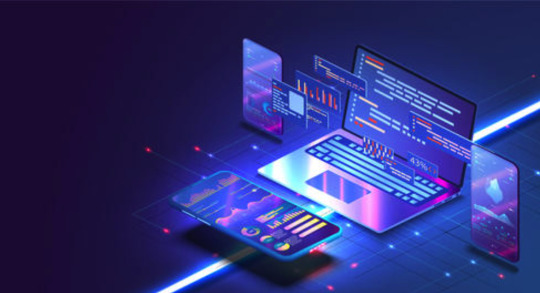
#SoftwareDevelopmentMarket#AIdrivenAutomation#IDEs (for Integrated Development Environments)#APIs (for Application Programming Interfaces)#CoherentMarketInsights
0 notes
Text
API development is a cornerstone for contemporary applications in today’s hyper-related virtual world. APIs (Application Programming Interfaces) empower developers to integrate various systems and create seamless and enriched experiences, making them indispensable in app development.
This article illuminates you on why APIs matter and how businesses can leverage them for success.
So, what’re you waiting for? Let’s delve deep into the world of API development.
Happy reading!
#api development#Application Programming Interfaces#apis#app development#mobile app development#software development process
0 notes
Text
Meta AI’s Big Announcements
New Post has been published on https://thedigitalinsider.com/meta-ais-big-announcements/
Meta AI’s Big Announcements
New AR glasses, Llama 3.2 and more.
Created Using Ideogram
Next Week in The Sequence:
Edge 435: Our series about SSMs continues discussing Hungry Hungry Hippos (H3) which has become one of the most important layers in SSM models. We review the original H3 paper and discuss Character.ai’s PromptPoet framework.
Edge 436: We review Salesforce recent work in models specialized in agentic tasks.
You can subscribe to The Sequence below:
TheSequence is a reader-supported publication. To receive new posts and support my work, consider becoming a free or paid subscriber.
📝 Editorial: Meta AI’s Big Announcements
Meta held its big conference, *Connect 2024*, last week, and AI was front and center. The two biggest headlines from the conference were the launch of the fully holographic Orion AI glasses, which represent one of the most important products in Meta’s ambitious and highly controversial AR strategy. In addition to the impressive first-generation Orion glasses, Meta announced that the company is developing a new brain-computer interface for the next version.
The other major release at the conference was Llama 3.2, which includes smaller language models of sizes 1B and 3B, as well as larger 11B and 90B vision models. This is Meta’s first major attempt to open source image models, signaling its strong commitment to open-source generative AI. Additionally, Meta AI announced the Llama Stack, which provides standard APIs in areas such as inference, memory, evaluation, post-training, and several other aspects required in Llama applications. With this release, Meta is transitioning Llama from isolated models to a complete stack for building generative AI apps.
There were plenty of other AI announcements at *Connect 2024*:
Meta introduced voice capabilities to its Meta AI chatbot, allowing users to have realistic conversations with the chatbot. This feature puts Meta AI on par with its competitors, like OpenAI and Google, which have already introduced voice modes to their products.
Meta announced an AI-powered, real-time language translation feature for its Ray-Ban smart glasses. This feature will allow users to translate text from Spanish, French, and Italian by the end of the year.
Meta is developing an AI feature for Instagram and Facebook Reels that will automatically dub and lip-sync videos into different languages. This feature is currently in testing in the US and Latin America.
Meta is adding AI image generation features to Facebook and Instagram. The new feature will be similar to existing AI image generators, such as Apple’s Image Playground, and will allow users to share AI-generated images with friends or create posts.
It was an impressive week for Meta AI, to say the least.
🔎 ML Research
AlphaProteo
Google DeepMind published a paper introducing AlphaProteo, a new family of model for protein design. The model is optimized for novel, high strength proteins that can improve our understanding of biological processes —> Read more.
Molmo and PixMo
Researchers from the Allen Institute for AI published a paper detailing Molmo and Pixmo, an open wegit and open data vision-language model(VLM). Molmo showcased how to train VLMs from scratch while Pixmo is the core set of datasets used during training —> Read more.
Instruction Following Without Instruction Tuning
Researchers from Stanford University published a paper detailing a technique called implicit instruction tuning that surfaces instruction following behaviors without explicity fine tuning the model. The paper also suggests some simple changes to a model distribution that can yield that implicity instruction tuning behavior —> Read more.
Robust Reward Model
Google DeepMind published a paper discussing some of the challenges of traditional reward models(RMs) to identify preferences in prompt indepdendent artifacts. The paper introduces the notion of robust reward model(RRM) that addresses this challenge and shows great improvements in models like Gemma —> Read more.
Real Time Notetaking
Researchers from Carnegie Mellon University published a paper outlining NoTeeline, a real time note generation method for video streams. NoTeeline generates micronotes that capture key points in a video while maintaining a consistent writing style —> Read more.
AI Watermarking
Researchers from Carnegie Mellon University published a paper evaluating different design choices in LLM watermarking. The paper also studies different attacks that result in the bypassing or removal of different watermarking techniques —> Read more.
🤖 AI Tech Releases
Llama 3.2
Meta open sourced Llama 3.2 small and medium size models —> Read more.
Llama Stack
As part of the Llama 3.2 release, Meta open sourced the Llama Stack, a series of standarized building blocks to develop Llama-powered applications —> Read more.
Gemini 1.5
Google released two updated Gemini models and new pricing and performance tiers —> Read more.
Cohere APIs
Cohere launched a new set of APIs that improve its experience for developers —> Read more.
🛠 Real World AI
Data Apps at Airbnb
Airbnb discusses Sandcastle, an internal framework that allow data scientists rapidly protype data driven apps —> Read more.
Feature Caching at Pinterest
The Pinterest engineering team discusses its internal architecture for feature caching in AI recommender systems —> Read more.
📡AI Radar
Meta introduced Orion, its very impressive augmented reality glasses.
James Cameron joined Stability AI’s Board of Directors.
The OpenAI soap opera continues with the resignation of their long time CTO and rumours of shifting its capped profit status.
OpenAI’s Chief Research Officer also resigned this week.
Letta, one of the most anticipated startups from UC Berkeley’s Sky Computing Lab, just came out of stealth mode with a $10 million round.
Image model platform Black Forest Labs is closing a new $100 million round.
Google announced a new $120 million fund dedicated to AI education.
Airtable unveiled a new suite of AI capabilities.
Enterprise AI startup Ensemble raised $3.3 million to improve the data quality problem for building models.
Microsoft unveiled its Trustworthy AI initiative.
Runway plans to allocate $5 million for producing AI generated films.
Data platform Airbyte can now create connectors directly from the API documentation.
Skills intelligence platform Workera unveiled a new agent that can assess, develop adn verify skills.
Convergence raised $12 million for building AI agents with long term memory.
TheSequence is a reader-supported publication. To receive new posts and support my work, consider becoming a free or paid subscriber.
#2024#agent#agents#ai#AI AGENTS#AI Chatbot#AI image#AI image generation#AI-powered#airtable#alphaproteo#America#Announcements#API#APIs#apple#applications#apps#ar#architecture#augmented reality#Behavior#Black Forest Labs#board#Brain#brain-computer interface#Building#Capture#Carnegie Mellon University#challenge
0 notes
Text
API-First Development: Revolutionizing Digital Integration and Scalability

Explore how API-first development is transforming digital integration and scalability. Learn how this approach streamlines development, enhances flexibility, and enables seamless communication between systems, driving innovation and growth in modern applications. Visit now to read more: API-First Development: Revolutionizing Digital Integration and Scalability
#agile development#api management#api strategy#api-first development#application programming interfaces#digital integration#digital transformation#microservices architecture#reusable apis#scalable software#software delivery velocity
0 notes
Text
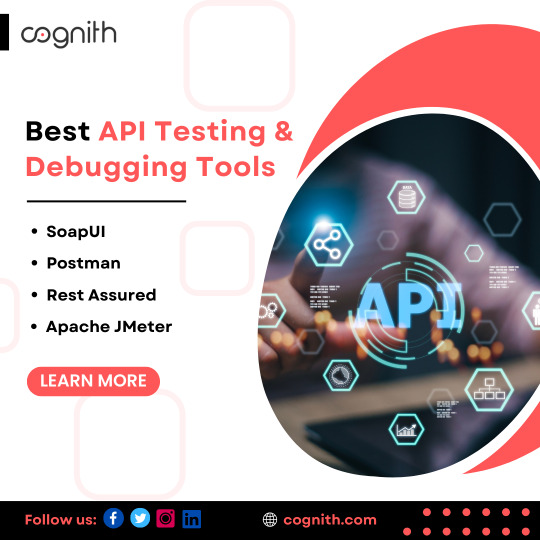
Introduction to API Testing for Beginners Start your journey in API testing with our beginner-friendly introduction and essential tips.
0 notes
Text
Understanding the Basics of APIs
Application Programming Interfaces (APIs)
crucial components in modern software development. They allow different software systems to communicate with each other and facilitate the integration of various services and functionalities. This article explores the basics of APIs, their types, and their importance in today’s tech landscape.

What is an API? for more........
An API (Application Programming Interface) is a set of rules and protocols that allows one piece of software to interact with another. It defines the methods and data formats that applications can use to request and exchange information. APIs enable different software systems to communicate, share data, and perform operations without needing to understand each other's underlying code.
Key Concepts:
Endpoint: A specific URL where an API service can be accessed. Endpoints represent different functionalities or resources offered by the API.
Request: The action taken by a client to interact with an API, such as retrieving data or sending information. Requests typically include a method (GET, POST, PUT, DELETE), headers, and sometimes a body.
Response: The data or acknowledgment returned by the API after processing a request. Responses usually include status codes, headers, and a body containing the requested information or result.
Authentication: A process used to verify the identity of a user or application accessing the API. Common methods include API keys, OAuth tokens, and Basic Auth.
Types of APIs
Web APIs: Also known as HTTP APIs or REST APIs, these are accessed over the web using HTTP/HTTPS protocols. They are widely used for web services and allow different systems to communicate via the internet.
RESTful APIs: Representational State Transfer (REST) APIs use standard HTTP methods and are designed to be stateless. They operate on resources identified by URLs and support various formats like JSON and XML.
SOAP APIs: Simple Object Access Protocol (SOAP) APIs use XML-based messaging protocols for exchanging information. SOAP APIs are known for their robustness and are often used in enterprise environments.
GraphQL APIs: A query language for APIs that allows clients to request specific data. GraphQL APIs provide a more flexible and efficient way to interact with data compared to REST APIs.
Library APIs: These APIs are part of software libraries or frameworks that provide predefined methods and functionalities for developers to use in their applications.

Click now
For those interested in deepening their understanding of APIs, including practical applications and advanced concepts, Getege offers a comprehensive course. This course provides detailed insights into API design, implementation, and best practices, helping you master the fundamentals and more complex aspects of API development.
#APIs#Application Programming Interfaces#REST API#SOAP API#GraphQL API#Web APIs#API Basics#API Integration
0 notes
Text
Conseils aux installateurs sur la borne de recharge pour véhicules électriques OZEV et les subventions aux infrastructures

Vous avez besoin d'un installateur agréé OZEV pour réclamer les subventions de borne de recharge pour véhicules électriques (VE) OZEV. Cette page donne un aperçu du processus de subvention pour les installateurs autorisés. Si vous souhaitez en savoir plus sur les subventions, consultez la section de ce guide sur les subventions disponibles. Vos responsabilités en tant qu'installateur agréé
En tant qu'installateur agréé, vous devez : aider le client à comprendre s'il répond aux critères de subvention installer uniquement des modèles de bornes de recharge éligibles vérifier que toutes les bornes de recharge installées fonctionnent et répondent aux exigences de sécurité fournir et télécharger toute la documentation pour soumettre la réclamation ne pas facturer la subvention aux clients dans l’avance d’une réclamation fournir au client une facture par demande
Devenez un installateur agréé Remplissez une demande d'installateur agréé Nous vous enverrons une lettre indiquant que vous êtes autorisé. Vous pourrez alors proposer les subventions à vos clients. Subventions disponibles pour vos clients Les subventions suivantes sont disponibles pour l'installation de bornes de recharge et d'infrastructures pour véhicules électriques :
Subvention de borne de recharge pour les locataires et les propriétaires d'appartements Subvention de borne de recharge pour les ménages disposant d'un parking dans la rue Subvention de borne de recharge et d'infrastructure pour le personnel des entreprises et leur flotte Parkings Borne de recharge et subvention aux infrastructures pour les propriétaires, y compris les parkings.
Programme de tarification sur le lieu de travail. Programme de tarification sur le lieu de travail pour les établissements d'enseignement financés par l'État Aperçu du processus de subvention. Subvention de borne de recharge pour les locataires et les propriétaires d'appartements. Le client vous contacte pour un devis. Vous envoyez un contrôle d’éligibilité.
Nous confirmons qu'ils sont éligibles. Vous installez la borne de recharge autorisée choisie par votre client. Vous soumettez votre demande via le portail en téléchargeant des photos et en fournissant les informations demandées sur le portail. Nous évaluons votre demande et si elle aboutit, nous vous versons la subvention.
Subvention de borne de recharge pour les ménages disposant d'un parking dans la rue. Le client vous contacte pour un devis. Vous soumettez une demande pour le client. Le client complète le formulaire qui lui a été envoyé. Nous confirmons si le client est éligible à la subvention. Une fois la solution de recharge transversale installée, vous installez la borne de recharge.
Vous complétez votre demande via le portail, en téléchargeant des photos de la borne de recharge et de la solution de recharge transversale et en fournissant les informations demandées. Nous évaluons votre demande et si elle aboutit, nous vous versons la subvention.
Subvention de borne de recharge et d'infrastructure pour le personnel des entreprises, les parcs de stationnement et les propriétaires. Le client vous contacte pour un devis. Voir aussi «Subventions destinées à l’installation borne de recharge poids lourd et camions électriques».
Le client dépose une demande via le portail. Vous installez les bornes de recharge et/ou l'infrastructure. Vous complétez votre demande via le portail, en téléchargeant des photos et en fournissant les informations demandées sur le portail. Nous évaluons votre demande et si elle aboutit, nous vous versons la subvention.
Programme de tarification sur le lieu de travail
Il existe un processus différent pour cette subvention. Vous pouvez en savoir plus sur le système de facturation sur le lieu de travail. Spécifications des points de recharge et des infrastructures. Lisez les spécifications requises pour les bornes de recharge et l’infrastructure.
Utiliser le portail de gestion des sinistres
Ce portail de gestion des réclamations vous permet de créer de nouvelles réclamations et de suivre les réclamations existantes pour :
les locataires et les propriétaires d'appartements - subvention de borne de recharge et d'infrastructure pour le personnel de l'entreprise et les parkings de flotte - subvention de borne de recharge et d'infrastructure pour les propriétaires (y compris les parkings résidentiels)
Connectez-vous ou créez un compte pour réclamer une subvention de borne de recharge pour véhicules électriques. Il existe différents portails pour le système de tarification sur le lieu de travail. Subvention aux bornes de recharge pour les ménages disposant d'un parking dans la rue
La page des spécifications contient des informations sur ce que vous pouvez réclamer. Consultez la rubrique « Ce que vous pouvez réclamer ».
Pour soumettre une réclamation, vous devez fournir : les détails des bornes de recharge que vous installez - un schéma du parking (le cas échéant) une copie de votre facture - il y a des instructions de facturation sur la page des spécifications
Les détails de la borne de recharge incluent : la marque et le modèle indiqués sur la liste des équipements approuvés par OZEV : des photos du numéro de série qui montrent la borne de recharge installée - suffisamment claires pour vérifier le modèle installé - et son emplacement.
Si vous rencontrez un problème avec une réclamation et devez nous contacter, utilisez ces coordonnées : pour une personne qui possède un appartement ou vit dans une propriété louée, envoyez un e-mail :
[email protected] pour une personne disposant d'un parking dans la rue, envoyez un e-mail : [email protected] pour un propriétaire demandant des subventions pour des propriétés résidentielles ou commerciales, e-mail : [email protected].
Pour demander des subventions d'infrastructure pour des propriétés résidentielles ou des petites et moyennes entreprises (PME), envoyez un e-mail à : [email protected] et indiquez s'il s'agit d'une propriété résidentielle ou commerciale. Assurez-vous d'avoir les informations suivantes du client avant de nous contacter :
Numéro de réclamation s'il s'agit du nom de l'installateur d'une application de propriétaire, quel schéma correspond à la réclamation, pour les captures d'écran si vous avez rencontré des problèmes en essayant de soumettre une candidature. Si vous rencontrez des problèmes techniques, envoyez un e-mail à : [email protected].
Envoyez un e-mail à [email protected] pour des problèmes techniques liés à la subvention de stationnement dans la rue. Utilisez une API pour soumettre plusieurs réclamations pour les locataires et les propriétaires d'appartements
Une API (Application Programming Interface) permet à 2 ou plusieurs programmes informatiques de communiquer entre eux. Vous aurez besoin d'un programme informatique configuré pour utiliser l'API. Nous ne fournirons pas ce logiciel. Vous pouvez soumettre plusieurs réclamations à la fois à l'aide de notre API. Ceci n’est disponible que pour la subvention aux appartements et aux locataires.
Vous devrez d'abord demander une clé API afin que nous puissions vérifier vos réclamations lorsque vous les soumettez. Pour demander une clé API, envoyez un e-mail à [email protected] avec : le nom et l'adresse de votre entreprise votre numéro d'installateur OZEV les détails de votre fournisseur de logiciel - si vous en utilisez un
Il est important que vous gardiez votre clé en sécurité. Ne le partagez avec personne en dehors de votre organisation, en dehors de votre partenaire logiciel. Une fois que vous avez votre clé, vous pouvez la fournir à votre équipe de développement logiciel ou à votre partenaire logiciel et partager notre documentation API avec eux.
Pour commencer, vous aurez accès à un environnement de test. Une fois que vous aurez démontré que vous pouvez télécharger une revendication de test à l'aide de l'API, vous recevrez une clé pour accéder à l'environnement de production. Vous pourrez ensuite soumettre des réclamations à l'aide de l'API.
Notre charte des informations personnelles
Notre charte relative aux informations personnelles contient les normes auxquelles vous pouvez vous attendre lorsque nous demandons ou détenons vos informations personnelles.
0 notes
Text
In the realm of mobile app development, APIs (Application Programming Interfaces) are akin to secret tunnels that allow different software programs to communicate effortlessly.
#mobile app development#API in mobile app development#Application Programming Interfaces#advantage of using API in mobile app
0 notes
Text
What is API Development : A Cutting-Edge API Development Unveils Seamless Integration Solutions For Websites
API stands for Application Programming Interface. In the context of APIs, the word Application refers to any software with a distinct function. API development refers to the process of creating Application Programming Interfaces (APIs), which are sets of rules and protocols that allow different software applications to communicate with each other.
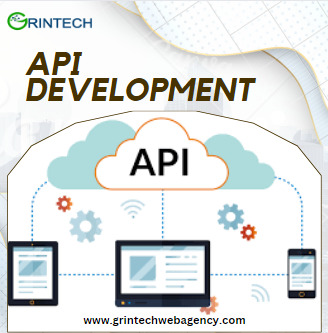
APIs define the methods and data formats that applications can use to request and exchange information. They enable developers to build software that can interact with other systems, access external data or services, and integrate with various platforms. API development involves designing, building, testing, documenting, and maintaining APIs to ensure smooth and efficient communication between different software components or systems.
#API Development#Application Programming Interfaces#Web Development#what is web agency#grintech web agency#best web agency#web design and web development agency#API Development Agency
0 notes
Text
Application Programming Interface (API) Security Market By Application, End-User And Geography – Forecast To 2033
Market Definition
Application Programming Interface (API) Security is a set of protocols, tools, and processes that are used to secure applications and services that are exposed through an API. APIs are used to provide access to data and services from a variety of sources. APIs can be used to access backend systems such as databases, messaging systems, and other services. As such, APIs must be secured to protect against malicious actors and to prevent unauthorized access.
Market Outlook
Application Programming Interface (API) Security technology is an increasingly important area of technology, as the use of APIs has grown exponentially in recent years. APIs are used in a variety of ways, from connecting applications to enabling data transfer between systems. As such, it is essential that APIs are secured and protected from malicious actors.
One of the key trends in API Security is the use of authentication and authorization. Authentication ensures that only authorized users are able to access an API, while authorization controls the level of access that a user has. Authentication and authorization can be implemented using various mechanisms, such as OAuth 2.0, OpenID Connect, or JSON Web Tokens.
A second key trend in API Security is the use of encryption. Encrypting data ensures that it is kept safe from unauthorized access, and is a vital part of securing APIs. Data can be encrypted using various methods, such as SSL/TLS, HTTPS, or SSH.
A third key trend in API Security is the use of threat detection and response. This involves monitoring APIs for suspicious activity and responding quickly to any potential threats. This can be done using various technologies, such as machine learning and artificial intelligence.
Finally, a fourth key trend in API Security is the use of API management platforms. These platforms provide a centralized point of control for managing APIs, and enable security policies to be applied across multiple APIs. This helps ensure that APIs are kept secure and compliant with regulations.
In summary, the key trends in API Security are the use of authentication and authorization, encryption, threat detection and response, and API management platforms. These technologies help ensure that APIs are kept secure and compliant with regulations, making them more reliable and secure for users.
Application Programming Interface (API) Security is the process of protecting programming interfaces from malicious attacks and unauthorized access to sensitive data. APIs are the backbone of many modern applications, providing access to data and services that are critical for businesses and organizations. As such, it is essential that APIs are secure and protected from malicious actors.
The key drivers of the API Security market can be divided into three categories: technology, regulations, and industry trends.
Technology:
The advent of cloud computing and the proliferation of mobile devices have made APIs an essential part of many applications. As a result, API security has become increasingly important. The use of encryption, authentication, and authorization technologies are essential for protecting APIs. Additionally, the use of API management platforms, such as API gateways, can help organizations manage and secure their APIs.
Regulations:
The increasing number of data breaches and security incidents has led to the adoption of various regulations and standards, such as the General Data Protection Regulation (GDPR) and the Payment Card Industry Data Security Standard (PCI DSS). These regulations and standards require organizations to ensure the security of their APIs. As such, organizations are increasingly investing in API security solutions to comply with these regulations.
To Know More: https://www.globalinsightservices.com/reports/application-programming-interface-api-security-market//?utm_id=1014
Research Objectives
Estimates and forecast the overall market size for the total market, across product, service type, type, end-user, and region
Detailed information and key takeaways on qualitative and quantitative trends, dynamics, business framework, competitive landscape, and company profiling
Identify factors influencing market growth and challenges, opportunities, drivers and restraints
Identify factors that could limit company participation in identified international markets to help properly calibrate market share expectations and growth rates
Trace and evaluate key development strategies like acquisitions, product launches, mergers, collaborations, business expansions, agreements, partnerships, and R&D activities
Thoroughly analyze smaller market segments strategically, focusing on their potential, individual patterns of growth, and impact on the overall market
To thoroughly outline the competitive landscape within the market, including an assessment of business and corporate strategies, aimed at monitoring and dissecting competitive advancements.
Identify the primary market participants, based on their business objectives, regional footprint, product offerings, and strategic initiatives
Request Sample: https://www.globalinsightservices.com/request-sample/GIS25163/?utm_id=1014
Market Segmentation
Application Programming Interface Security Market is segmented into organization size , deployment type, industry and region. Based on organization size the market is categorized into Small Enterprises, Medium Enterprises and Large Enterprises. On the basis of deployment type, it is further segmented into On-premise and Cloud-based. Based on industry it is segmented into BFSI, IT & Telecom, Government, Healthcare and Life sciences, Retail and Consumer goods and Others. Whereas based on region it is divided into North America, Europe, Asia-Pacific and Rest of the World.
Request Customization@ https://www.globalinsightservices.com/request-customization/GIS25163/?utm_id=1014
Major Players
The Application Programming Interface Security Market Report includes players such as Akamai Technologies, Inc. (U.S), IBM Corporation (U.S), Google LLC (U.S), Microsoft Corporation (U.S), Salesforce.com, Inc. (U.S), Barracuda Networks, Inc. (U.S), Axway Inc. (U.S), Ping Identity Corporation (U.S), Imperva, Inc. (U.S) and Cequence Security (U.S), among others.
Request Discounted Pricing@ https://www.globalinsightservices.com/request-special-pricing/GIS25163/?utm_id=1014
Research Scope
Scope – Highlights, Trends, Insights. Attractiveness, Forecast
Market Sizing – Product Type, End User, Offering Type, Technology, Region, Country, Others
Market Dynamics – Market Segmentation, Demand and Supply, Bargaining Power of Buyers and Sellers, Drivers, Restraints, Opportunities, Threat Analysis, Impact Analysis, Porters 5 Forces, Ansoff Analysis, Supply Chain
Business Framework – Case Studies, Regulatory Landscape, Pricing, Policies and Regulations, New Product Launches. M&As, Recent Developments
Competitive Landscape – Market Share Analysis, Market Leaders, Emerging Players, Vendor Benchmarking, Developmental Strategy Benchmarking, PESTLE Analysis, Value Chain Analysis
Company Profiles – Overview, Business Segments, Business Performance, Product Offering, Key Developmental Strategies, SWOT Analysis
Buy your copy here: https://www.globalinsightservices.com/checkout/single_user/GIS25163//?utm_id=1014
With Global Insight Services, you receive:
10-year forecast to help you make strategic decisions
In-depth segmentation which can be customized as per your requirements
Free consultation with lead analyst of the report
Infographic excel data pack, easy to analyze big data
Robust and transparent research methodology
Unmatched data quality and after sales service
Contact Us:
Global Insight Services LLC 16192, Coastal Highway, Lewes DE 19958 E-mail: [email protected] Phone: +1-833-761-1700 Website: https://www.globalinsightservices.com/
0 notes
Text
Best C# Testing Frameworks In 2024 - Technology Org
New Post has been published on https://thedigitalinsider.com/best-c-testing-frameworks-in-2024-technology-org/
Best C# Testing Frameworks In 2024 - Technology Org
Automation testing frameworks are essential in ensuring application performance and quality. C# testing frameworks offer multiple features to meet various testing requirements. In this blog, we will explore the top C# testing frameworks of 2024.
Writing software code. Image credit: pxhere.com, CC0 Public Domain
C# testing Frameworks – Overview
The C# testing framework is a set of tools and an API that help construct, run, and manage the automation testing process in C# applications. Theses framework presents the developers with the systematic method to design and architect test suites so that the software works correctly and satisfies the given requirements.
C# testing frameworks typically offer features such as
Test case organization: Allow developers to group tests into logical units such as test classes or test suites for better organization and management.
Assertions: Build functions to state that the code has followed the desired sequence for the code under automation testing to make a program behave logically.
Setup and teardown: Support setup and teardown actions to correctly initialize the test environment before running tests and consequently clean up.
Test discovery and execution: Automatically execute and test the code and provide responses about test results and errors associated with the code.
Mocking and stubbing: Developers should be able to create mock objects to simulate dependencies and isolate units of code for automation testing.
Top C# Testing Frameworks In 2024
Let us see some of the top C# testing frameworks in 2024.
C# Selenium WebDriver
C# Selenium WebDriver is a framework for automation testing. It can process the navigation from the web page and detect its functions, performance, and user experience.
It also allows developers to write code and simulate user actions to verify elements on the web page. This allows for the creation of reliable automated tests that can be executed repeatedly to ensure the application’s behavior
Its cross-browser compatibility allows developers to write tests once and run them across multiple web browsers to ensure test coverage and compatibility with various user environments.
NUnit
The NUnit is a unit testing framework for languages like C# and VB.NET. It addresses the need for developers to write, manage, and run the unit test either within Visual Studio or through the command-line interface.
NUnit offers assertions, test runners, and attribute-based automation testing capabilities to validate the behavior of individual components. Its extensible architecture allows integration with various development tools and continuous integration pipelines that enable automation testing practices. NUnit supports parameterized tests, setup, teardown methods, and parallel test execution in automation testing. It remains the best framework for .NET developers to maintain code quality through unit testing.
MSTest
MSTest provides developers an efficient tool for writing and executing unit tests for .NET applications. MSTest can integrate with the IDE to create and manage unit tests effortlessly.
MSTest supports various testing features, such as test discovery, assertion methods, test execution, and result reporting, to effectively validate code’s behavior and functionality. It also offers attributes for defining test methods and classes to enhance the organization’s efficiency and maintainability.
It reduces the writing process and testing execution action and provides a wide user guide for most project types like .NET Core, .NET Framework, and Xamarin.
MSTest is integrated into the Microsoft Azure DevOps cloud platform to customize the unit cloud testing phase into automation testing and continuous feedback.
xUnit.NET
xUnit.NET follows the xUnit testing pattern, emphasizing simplicity, clarity, and extensibility. xUnit.NET provides developers a flexible platform for writing and executing unit tests to validate code functionality.
Its extensible architecture allows for easy integration with various development tools and frameworks. It also offers multiple assertion methods and test runners for a diverse set of testing scenarios.
xUnit.NET promotes test isolation, parallel test execution, and deterministic test outcomes. It supports test fixtures and setup/teardown methods. It can also encourage test-driven development (TDD) by integrating with popular IDEs. It also offers integration with continuous integration tools to incorporate unit testing into their CI/CD pipelines.
SpecFlow
SpecFlow is a BDD framework that uses natural language syntax for creating and writing scenarios, as well as the execution and management of acceptance tests for .NET software. It can be integrated with Visual Studio and other .NET development tools to enhance collaboration among developers and testers.
SpecFlow allows it to formulate executable specifications expressed in a human-comprehensible manner using the Gherkin syntax. These specifications can be added to the software documentation to maintain their functionality.
SpecFlow encourages collaboration and communication among cross-functional teams by defining a common language of application behavior expressed in a readable format. This approach also promotes code reusability and manageability by reusing the step definitions within many scenarios and features.
FluentAssertions
Fluent Assertions is the assertion library for .NET. It enables developers to write assertions in their unit test cases. It uses natural language that allows developers to identify assertions through the fluent interface.
It lets developers write assertion statements like natural language sentences to make the unit test easily understood. Such if-else statements held in the form of assertions can be written as “should” followed by a mentionable situation like “should be equal to” or “should contain,” showing what kind of behavior is expected for that tested code.
It supports various assertions like basic equality checks, collection assertions, and complex object comparisons. It also provides built-in support for asserting exceptions to verify that their code throws the expected exceptions under specific conditions. It also provides customizable assertion messages and failure descriptions.
Ranorex
Ranorex is an automation testing tool specially developed to make application testing of all platforms, including desktop, web, and mobile apps, easier and faster. Its graphical user interface (GUI) is so intuitive to create automated tests.
Unlike other testing tools, Ranorex has an object recognition capability that facilitates testers’ easy identification and interaction with UI elements, including buttons, text fields, and dropdown lists distributed across different platforms. This enables the development of automation testing, which precisely reproduces user interactions.
In addition, it provides built-in support for data-driven testing so they can easily write their test cases and execute them using different sets of data to ensure complete test coverage. It integrates with popular continuous integration and delivery tools that will automate the execution of the created tests as part of their build-up pipelines for continuous integration/delivery.
Its reporting capabilities offer a detailed assessment of the test results and common metrics needed. Testers can analyze the test results, identify problems, and track the progress of their testing activities by using customizable metrics.
BDDfy
BDDfy enables developers to implement Behavior-driven Driven Development practices in their .NET projects. BDDfy allows teams to focus on defining the behavior of their software through executable specifications written in natural language to establish collaboration between developers, testers, and stakeholders.
BDDfy also allows developers to write tests using natural language constructs to make the intent of the tests clear and understandable to all team members. This facilitates better communication and alignment of expectations throughout the development process.
The integration provides flexibility and versatility in test organization and execution, enabling teams to adopt BDD practices.
BDDfy provides detailed and insightful test reports that highlight the software’s behavior under test. These reports provide valuable documentation and can be shared with stakeholders to demonstrate progress and ensure alignment with requirements.
ApprovalTests
ApprovalTests is a versatile testing library designed to simplify verifying code output. ApprovalTests allows developers to approve the current behavior of their code by capturing and comparing its output against previously approved results.
Developers can quickly integrate ApprovalTests into their existing testing workflow regardless of the programming language or testing framework used. This makes it a valuable tool for various development environments like .NET, Java, Python, and more.
ApprovalTests improves handling complex output formats such as large data structures, images, and multi-line text. Developers can easily identify unexpected changes by capturing the code output and comparing it to approved results.
It effectively supports generating and managing approval files to review and update approved results as needed. This ensures that tests remain relevant and accurate over time.
NSubstitute
NSubstitute is a .NET mocking library constructed to simplify the process of creating and maintaining mock classes in unit testing. Mocking is a technique used in unit testing to simulate the behavior of dependencies in a component under test interactions with developers to isolate and test individual components.
NSubstitute expressive syntax enables developers to define mock objects and their behavior using natural language constructs. This makes it easy to understand and maintain mock setups.
NSubstitute supports various mocking scenarios and provides powerful features such as argument matches, callbacks, and received call verification to create flexible mock setups for unit tests.
The integration allows developers to use NSubstitute alongside their existing testing tools and practices without additional configuration.
NSpec
NSpec is a behavior-driven development testing framework for .NET developers designed to promote clarity, readability, and expressiveness in test specifications. It allows developers to write tests in a natural language format that closely resembles the software’s behavior specifications.
NSpec focuses on human-readable test specifications written using a syntax similar to plain English. This makes developers, testers, and stakeholders actively involved in the business and simplifies behavior definition and verification.
NSpec offers us features to do test management, such as grouping test cases under nested contexts, showing descriptive naming conventions, and a behavior-driven development paradigm. This allows developers to create clear and concise test specifications that accurately describe the expected behavior of the software under test. It also ensures compatibility and consistency across different testing environments, making adopting NSpec in existing projects easier.
Utilizing an automation testing framework tailored for C#, conducting automated testing for your website or mobile application becomes a straightforward task.
LambdaTest, an AI-powered test orchestration and execution platform, empowers you to execute manual and automated testing for your web projects on an extensive online browser farm featuring over 3000 real browsers, devices, and operating system configurations. Its cloud-based automation testing platform facilitates the execution of automation tests utilizing various C# testing frameworks such as Selenium, Appium, SpecFlow, NUnit, and others that help you test websites in different browsers.
Conclusion
In conclusion, C# testing frameworks in 2024 present developers with the right choices to meet various testing requirements. From NUnit’s strong focus on unit testing to SpecFlow’s emphasis on behavior-driven development, developers can access efficient tools for maintaining software quality. Whether the need is for unit testing or behavior-driven testing, these frameworks improve automation testing workflows and enhance the overall quality of C# applications.
#2024#ai#AI-powered#API#applications#approach#apps#architecture#assessment#automation#azure#Behavior#Blog#browser#Business#buttons#CI/CD#classes#Cloud#cloud platform#code#Collaboration#command#command-line interface#communication#continuous#continuous integration#cross-browser#data#Data Structures
0 notes
Text
Demystifying APIs
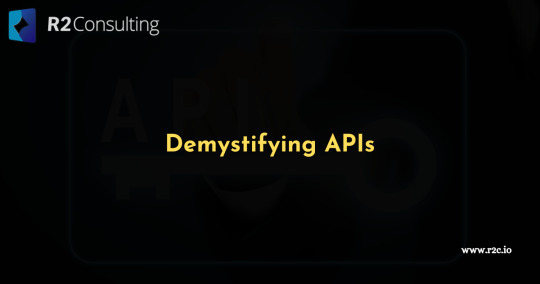
Introduction
Have you ever wondered how your weather app knows what’s happening outside, or how you can seamlessly log in to multiple platforms with a single Facebook account? The answer lies in a realm often unseen by the average user: the world of APIs (Application Programming Interfaces).
So, what exactly is an API?
Think of an API as a waiter in a fancy restaurant. You (the user) are enjoying the delicious meal (the website or app), but it’s the waiter (the API) who relays your orders (requests) to the kitchen (the server) and brings back the responses (data). These responses could be anything from weather updates to news feeds to personalized recommendations.
But what do APIs do? Why are they so important?
APIs serve as essential connectors, enabling communication and data exchange between different applications and servers. They power a vast array of functionalities:
Data access: APIs allow apps to tap into external data sources, like weather services, social media platforms, or news feeds, enriching their features and content.
User authentication: Logins with Facebook, Google, or Twitter? Those rely on APIs to verify your identity and seamlessly connect you to different platforms.
Payment processing: Secure online transactions wouldn’t be possible without APIs connecting your purchase to payment gateways and delivering confirmation back to the store.
App integration: APIs enable different apps to work together, like mapping apps sharing location data with ride-hailing services or fitness trackers syncing with health platforms.
Automation: Businesses use APIs to automate tasks like sending notifications, managing customer data, or controlling smart devices.
Are APIs Standalone Applications?
An API is not typically considered a standalone application in the traditional sense. Here’s why:
APIs as Intermediates:
APIs are software intermediaries that enable communication and data exchange between applications. They don’t function independently but rather act as bridges or connectors.
They don’t have a direct user interface or provide a complete user experience on their own. Instead, they are designed to be consumed by other applications or systems.
Components of Larger Systems:
APIs are often components within larger applications or systems. They provide specific functionality or access to data, but they rely on the surrounding application for overall structure and user interaction.
For example, a web application might have an API to allow other applications to access its data, but the API itself isn’t the entire application.
Backend Focus:
APIs primarily operate on the backend or server-side, handling data exchange and processing requests from clients. They don’t typically have a frontend user interface that users directly interact with.
Comparison to Standalone Applications:
Standalone applications offer a complete user experience with their own user interface and often handle tasks independently. Examples include desktop apps, mobile apps, and web apps that users directly interact with.
APIs as Enablers:
While not standalone applications, APIs play a crucial role in enabling communication and integration between different systems. They are essential for building modern, interconnected applications and services.
They power a vast range of functionalities, from mobile apps fetching data from servers to websites embedding content from third-party services to systems communicating within organizations.
Understanding the “interface” aspect of an API
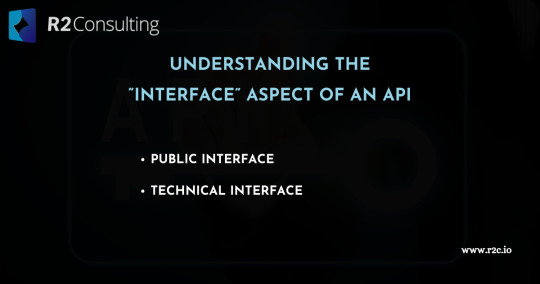
When talking about the “interface component” of an API, it can refer to two slightly different aspects:
Public Interface:
This is the contract between the API provider and its consumers. It defines how external developers or systems can interact with the API. This interface includes several key elements:
API Endpoints: These are the URIs through which requests are sent and responses are received. Each endpoint typically corresponds to a specific resource or action.
HTTP Methods: The API specifies which HTTP methods (GET, POST, PUT, DELETE, etc.) are used for different operations on the resources.
Data Formats: The API defines the format of data exchanged between client and server, typically JSON or XML.
Authentication and Authorization: Mechanisms for securely accessing the API and controlling access to specific resources.
Error Handling: How the API communicates errors and unexpected situations to the client.
Documentation: Clear and comprehensive documentation to guide developers in using the API effectively.
This public interface is essentially the “face” of the API that everyone sees. It’s crucial for making the API easy to understand and use for developers.
Technical Interface:
This refers to the internal structure and implementation of the API itself. It encompasses the programming language, libraries, frameworks, and protocols used to build and execute the API code. While this aspect is less directly relevant to external consumers, it still plays a vital role in determining the API’s performance, scalability, and maintainability.
Therefore, the “interface component” of an API encompasses both the publicly visible contract for interaction and the underlying technical implementation that makes it work. Both aspects are critical for creating an effective and successful API.
Additionally:
Many APIs use tools like API gateways to manage and control the interface. These gateways can sit in front of the actual API code and handle tasks like routing requests, security enforcement, and versioning.
Some APIs also offer dedicated developer portals with interactive documentation, testing tools, and community forums. These features can further enhance the interface and improve the development experience.
How do users actually interact with APIs?
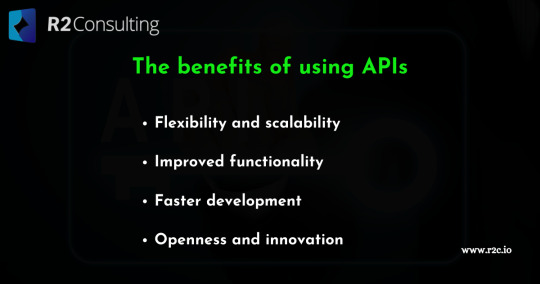
The benefits of using APIs:
Flexibility and scalability: APIs allow developers to build modular applications that can easily integrate with external services and adapt to changing needs.
Improved functionality: Apps can leverage specialized data and tools offered by other APIs, enhancing their own features and capabilities.
Faster development: Developers can avoid reinventing the wheel by using existing APIs for common tasks, leading to faster development and deployment.
Openness and innovation: APIs foster collaboration and innovation by encouraging developers to build upon existing services and create new functionalities.
Final Thoughts
The next time you marvel at the seamlessness of your online experience, remember the silent partners behind the scenes: APIs, the web’s unsung heroes, quietly connecting the dots and making it all possible.
0 notes
Text
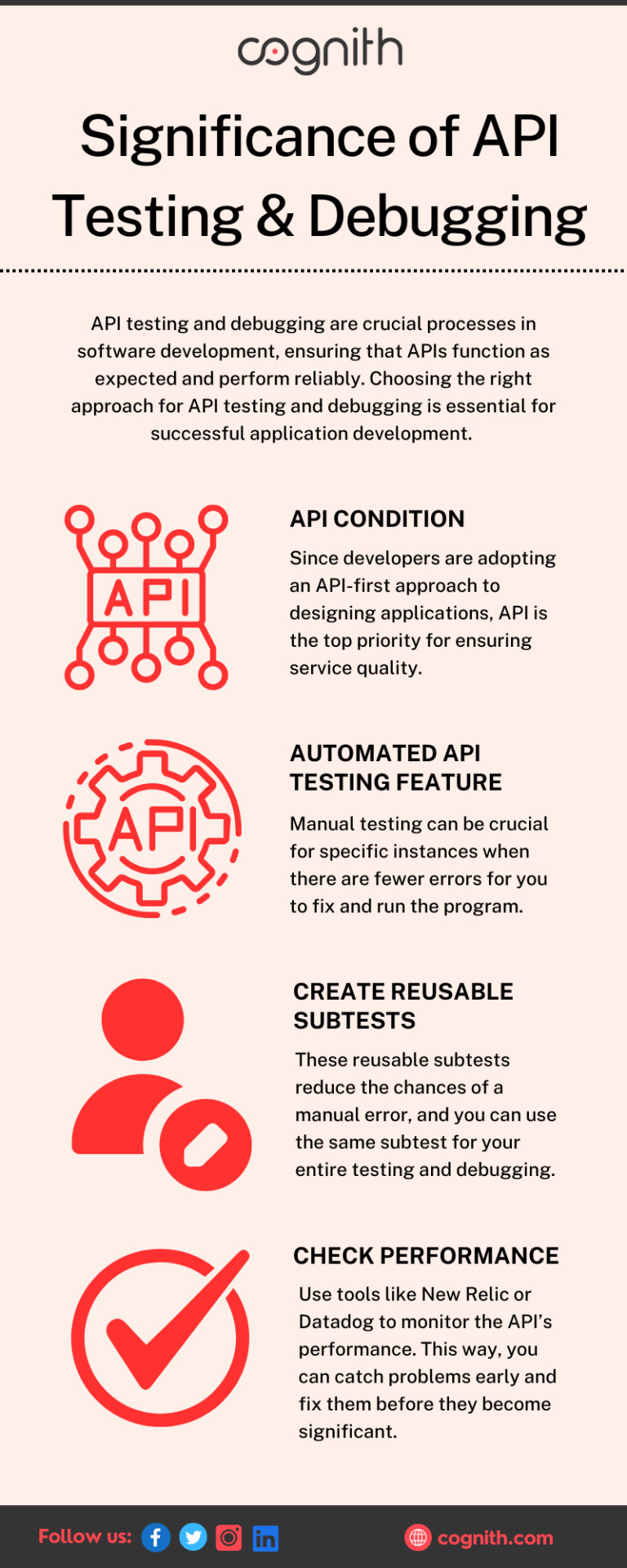
Streamline Your Development Process with API Testing Enhance your development workflow with efficient API testing. Learn key strategies and benefits of thorough API testing.
0 notes
Text

Technology plays a vital role in everyone’s daily lives, from the simplest forms of applications to the most creative inventions. Every application or software has been built by a web developer. In these present days, students and youngsters want to be web developers to make their careers way better.
#Web Development#Remote Work in Web Development#Web Development Certifications#Interview Tips for Web Developers#Salary Expectations in Web Development#Job Satisfaction in Web Development#Future of Web Development#Content Management Systems (CMS)#Website Optimization#Cross-browser Compatibility#Mobile Development#Web Security#APIs (Application Programming Interfaces)
0 notes
Note
We know Ao3 doesn't have an app and yet they keep popping app. That makes me feel that people want it and get exploited by the fake ones.
There isn't a plan to make one but, have a PWA been considered?
Hey chaoticneutralchocolate -
The main reason that apps pop up for AO3 is not because fandom folks want it, so much as app-making-folks want to monetize fans accessing fanfiction. All those apps? they have ads. that make the developer money.
Currently, we do not have an API (application program interface), which is needed to allow an app to interact with our servers. Developing such an interface and then the apps themselves (for the various mobile platforms) would take significant time and coder effort. It’s unlikely to happen while the Archive code is still rapidly changing, as this would require the apps to be updated for each change. You can see more details at our news post on the subject: https://archiveofourown.org/admin_posts/3390 .
Even a browser-based app interface would be a tremendous amount of work that we do not have the staffing (or inclination) to establish or maintain.
In the meantime, you should be able to access the fully functional Archive using your device’s browser with our mobile stylesheet, and to download works to read offline with an e-reader app. You can also add a link to the site on your home screen ( https://www.howtogeek.com/196087/how-to-add-websites-to-the-home-screen-on-any-smartphone-or-tablet/ ) for quick access!
I should note that, due to fannish response, the app stores removed a number of unofficial apps in 2020. See the Fanlore page for more information: https://fanlore.org/wiki/AO3_App_Wars
(if you see an app out there claiming to be AO3 or using our logo, send a message to OTW Legal and let them know the name of the app so they can look into it!)
I hope this answers your question!
~ Mod Remi
#organization for transformative works#otw#archive of our own#ao3#we will never have an app folks#that is why we work so hard to have the mobile site work so well#and you can always download and use an e-reader!
2K notes
·
View notes